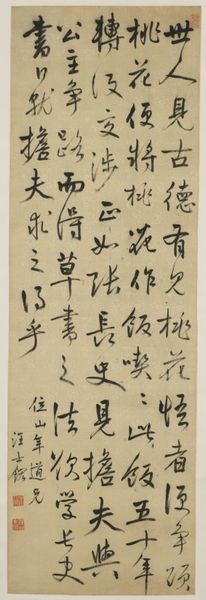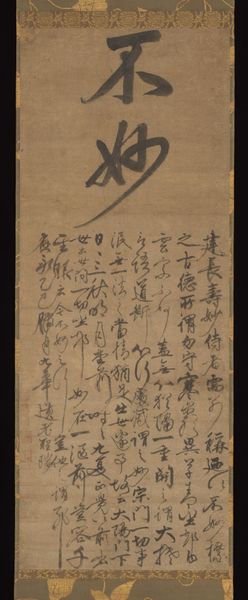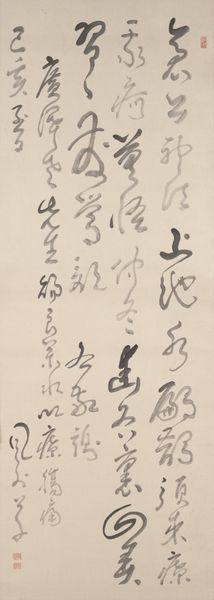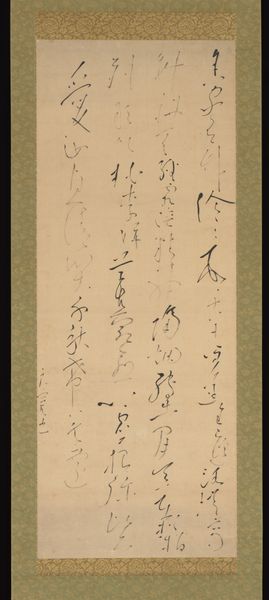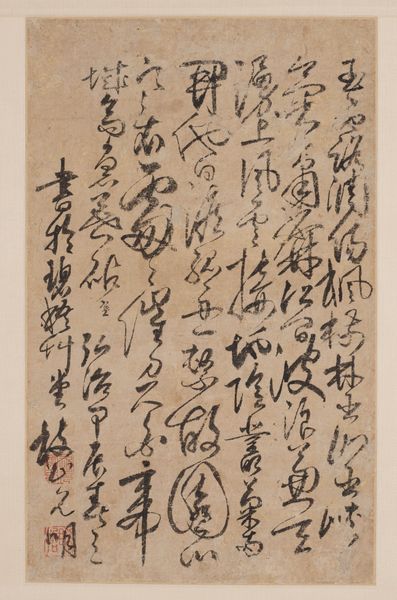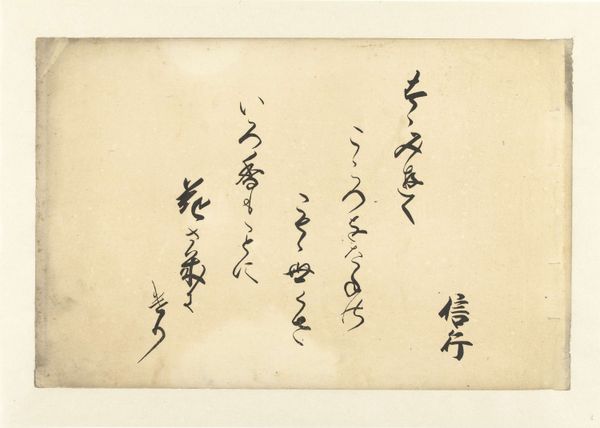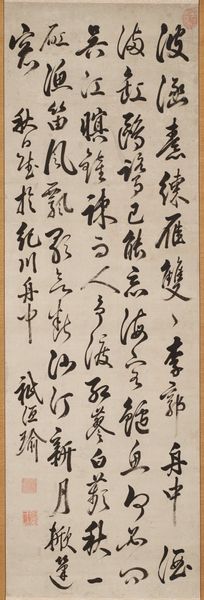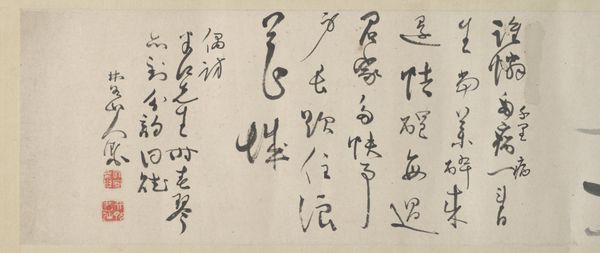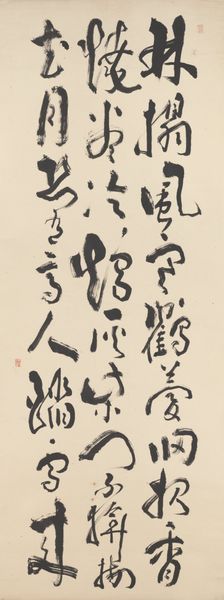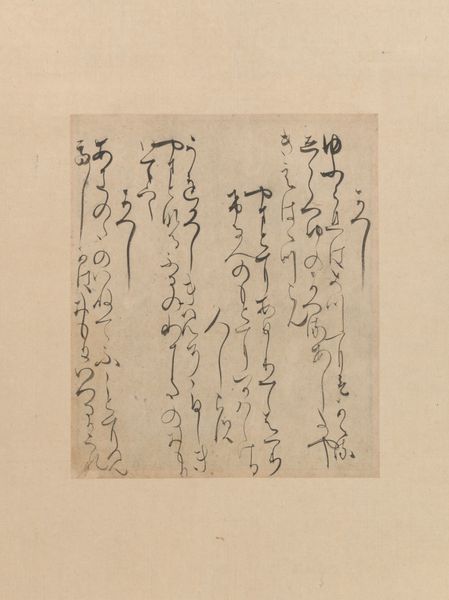
drawing, paper, ink, pen
#
drawing
#
asian-art
#
paper
#
ink
#
calligraphic
#
china
#
pen
#
calligraphy
Dimensions: 90 3/4 x 16 3/16 in. (230.51 x 41.12 cm) (image)
Copyright: Public Domain
Fang Yüan-huan's calligraphy in running grass script is an ink on paper work. The ‘running grass’ or cursive script in which the text is written indicates that this was a work made for scholarly or intellectual circles. In this context, calligraphy became linked to the expression of personal feelings and the cultivation of the self, making it a key feature of Neo-Confucianism which was popular at that time. Neo-Confucianism emphasized self-cultivation and moral reasoning, and these values were closely linked to the arts. Calligraphy in particular was seen as a direct reflection of the artist's character and inner state. Scholars interested in learning more about calligraphy should consult works on Chinese social history, as well as philosophical texts to deepen their understanding of its significance.
Comments
minneapolisinstituteofart almost 2 years ago
⋮
Fang Yuan-huan from Shantung province passed the provincial (second-level) examinations in 1534. This exuberant and somewhat wild hsing-tsao (running grass) inscription quotes from a neo-Confucian, neo-Taoist commentary by the Sung philosopher Chu Hsi (1130-1200) and Chu's friend, Lü Tsu-ch'ien (1151-1181), on the practical application of moral values. It reads: Master Hui-an (Chu Hsi) said that a man must keep kindness and gentility as his principle; bravery and firmness should not be lacking from his virtues, but must only be applied when appropriate. Master Lü (Lü Tsu-ch'ien) asked why if a scholar-official were learned and knowledgeable, he still could not use his Tao to educate and influence (people) far and near' It must be because he is unable to touch the solid ground (i.e., his knowledge is too theoretical to be practical).
Join the conversation
Join millions of artists and users on Artera today and experience the ultimate creative platform.

